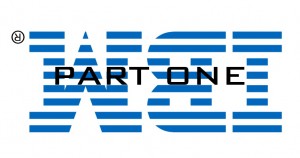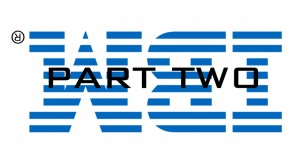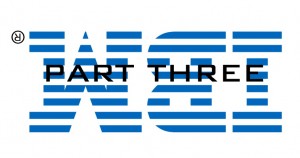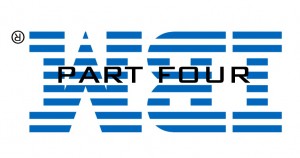This week Bob Cringely in a walk away salvo laid out IBM in a series of columns. He covers much. We've worked for IBM in variety of roles over the years, and it has been getting harder to figure out what it is they do sometimes. Last week they sold Retail to Toshiba to provide some additional context.
Not your father's IBM
Posted in 2012 on April 18th, 2012 by Robert X. Cringely - 231 Comments This
is my promised column about IBM -- the first of several on the topic,
all to be delivered this week. The last time I wrote at length about
Big Blue was in 2007. I have been asked by readers many times to
revisit the subject, something I haven't wanted to do because it is such
a downer. Writing the last time I hoped the situation, once revealed,
would improve. But it hasn't. And so, five years later, I turn to IBM
again. The direct impetus for this column is IBM's internal plan
to grow earnings-per-share (EPS) to $20 by 2015. The primary method for
accomplishing this feat, according to the plan, will be by reducing US
employee head count by 78 percent in that time frame.
This
is my promised column about IBM -- the first of several on the topic,
all to be delivered this week. The last time I wrote at length about
Big Blue was in 2007. I have been asked by readers many times to
revisit the subject, something I haven't wanted to do because it is such
a downer. Writing the last time I hoped the situation, once revealed,
would improve. But it hasn't. And so, five years later, I turn to IBM
again. The direct impetus for this column is IBM's internal plan
to grow earnings-per-share (EPS) to $20 by 2015. The primary method for
accomplishing this feat, according to the plan, will be by reducing US
employee head count by 78 percent in that time frame.
Reducing employees by more than three quarters in three years is a bold and difficult task. What will it leave behind? Who, under this plan, will still be a US IBM employee in 2015? Top management will remain, the sales organization will endure, as will employees working on US government contracts that require workers to be US citizens. Everyone else will be gone. Everyone.
Now industries and businesses change all the time because they have to or want to. Big companies and small have to adjust to the realities and changing reward structures of their markets and cultures. Or they change to better adapt to new opportunities. But what's happening at IBM is different than that. It's different because this incredible American success story, if it continues to follow its current course, will utterly fail. It's different, too, because neither IBM management nor Wall Street seem to have the slightest notion of the peril facing the company. My deepest fear is they simply don't care.
The first question we need to answer is why this is happening? I think much of that answer can be supplied by Apple co-founder Steve Jobs. In my film, Steve Jobs -- The Lost Interview, here's what Jobs had to say about IBM, circa 1995. It applies just as well today.
Article continues Source Link
Part 2
Something's rotten in IBM Dubuque
Posted in 2012 on April 18th, 2012 by Robert X. Cringely - 156 Comments Part two in a long series of posts about what's wrong with IBM
Part two in a long series of posts about what's wrong with IBM
IBM's 2015 plan was hatched to deliver $20 earnings-per-share to the delight of Wall Street. IBMers were offered a carrot, a few shares of stock granted at the end of 2015, as a reward for helping them achieve that target. It appears that IBM's goal is not to issue any of those grants as they continue to conduct resource actions (IBMspeak for permanent layoffs) and remove talented and valuable US employees in favor of moving work to low cost countries such as Brazil, Argentina, India, China and Russia.
Work that stays onshore is mainly sent to what are called Global Delivery Facilities (GDF's), two of which were created at heritage IBM locations (Poughkeepsie, NY and Boulder, CO) while starting new ones in Dubuque, IA and most recently Columbia, MO. IBM's public position is they are creating jobs in smaller towns when in fact they are displacing workers from other parts of the US by moving jobs to these GDFs or to offshore locations.
In the case of Dubuque and Columbia, IBM secured heavy incentives from state and local governments to minimize their costs in these locations and are achieving further savings by paying the technical team members, most of whom are new hires or fresh college grads with no experience, a fraction of what experienced support personnel would require.
Let's look closer at Dubuque, not because it is any different from the rest of IBM USA but simply to characterize the company at a finer scale.
When IBM opened the Dubuque center the people of Iowa were expecting great things. The center was staffed by a small number of US IBMers in management positions. IBM then brought over people from India for "training," then sent them back. Few H1B visas were even required.
Every time IBM sent a batch of trainees back to India from Iowa they laid off US workers. While Dubuque was led to believe they'd get an influx of highly-paid new residents, what the city actually received was a transient workforce of underpaid people -- workers that may well be invisible to local government. It would be interesting to know how many permanent hires in Dubuque have been Iowa residents or graduates of Iowa universities? How many workers spend less than a year in Dubuque? Is Iowa seeing any benefit from the investment they made to open the IBM Dubuque center?
Whenever IBM has a big project they now have to bring in extra workers, usually from India. I have been told they plan the arrivals over several days to a few weeks. They route people through different airports. They make sure there are never more than two or three workers coming on the same flight, effectively avoiding notice by Homeland Security.
Are any of these people paying FICA or US income taxes? Good question. Why is IBM sneaking around? Better question.
Article continues... Source Link
Part 3
Magical thinking at IBM
Posted in 2012 on April 19th, 2012 by Robert X. Cringely - 26 Comments Third in a long series of columns about what's wrong with IBM
Third in a long series of columns about what's wrong with IBM
The current irrationality at IBM described in my two previous columns and in the comments so far from about 300 readers is not new. Big Blue has been in crazy raptures before. One was the development of the System 360 in the 1960s when T.J. Watson Jr. bet the company and won big, though it took two tries and almost killed the outfit along the way. So there's a legacy of heroic miracles at IBM, though it has been a long while since one really paid off.
There are those who would strongly disagree with this last statement. They'd say that with its strong financial performance IBM is right now in one of its greater moments. But haven't we just spent a day and 2000 words showing that's not true?
Successful companies aren't heartsick and IBM today is exactly that, so the company is not a success.
Looking back over the 35 years I've been covering this story I can see in IBM an emotional and financial sine wave as rapture leads to depression then to rapture again, much of it based on wishful thinking. The first IBM rapture I experienced was pre-PC under CEO John Opel, when someone in finance came up with the idea of selling to IBM's mainframe customers the computers they'd been leasing. Sales and profits exploded and the amazing thing was the company began writing financial plans based not only on the idea that this conversion largess would continue essentially forever but that it would actually increase over time, though obviously there were only so many leases to be sold.
When the conversions inevitably ended, IBM execs were shocked, but Opel was gone by then, which may have set another important precedent of IBM CEOs getting out of Dodge before their particular shit has hit a fan. We see that most recently in Sam Palmisano, safely out to pasture with $127 million for his trouble, though at the cost of a shattered IBM.
Thanks for nothing, Sam.
Opel was followed by John Akers who enjoyed for a time the success of the IBM PC, though Bill Lowe told me that IBM never did make a profit on PCs. No wonder they aren't in that business today. Akers' departure was particular gruesome but it led to IBM looking outside for a leader for the first time, hiring Lou Gerstner, formerly of American Express.
Gerstner created the current IBM miracle of offering high-margin IT services to big customers. It was a gimmick, an expedient to save IBM from a dismal low point, but of course it was soon integrated into IBM process and then into religion and here we are today with an IBM that's half IT company half cargo cult, unable to get beyond Gerstner's stopgap solution.
Ironically, in Palmisano's effort to continue Gerstner's legacy, he destroyed almost every one of his predecessor's real accomplishments.
Where will future IBM growth come from? Wherever it comes from, can IBM execute on its plan to grow new businesses using cheap, underskilled offshore talent? If Global Services is struggling to hang on, how well will this work for the new IBM growth businesses coming up? As IBM infuriates more and more of its customers, how long can IBM expect to keep selling big ticket products and services to those very same customers?
Global Services is a mature business that has been around for about 20 years. In IBM's 2015 business plan big income is expected from newer businesses like Business Analytics, Cloud and Smarter Computing, and Smarter Planet. Can these businesses be grown in three to five years to the multi-billion dollar level of gross profit coming from Global Services? Most of these businesses are tiny. A few of them are not even well conceived as businesses. It takes special skills and commitment to grow a business from nothing to the $1 billion range. Does IBM have what it takes?
Article continues....Source Link
Part 4
How to fix IBM in a week
Posted in 2012 on April 20th, 2012 by Robert X. Cringely - 38 Comments
Last in a too long series of columns on what's wrong with IBM.
Enough horror stories, already! How do we just fix IBM?
Well it can't be done from the inside so it has to be done from the outside. And the only outside power scary enough to get through the self-satisfied skulls of IBM top management is IBM customers. A huge threat to revenue is the only way to move IBM in the proper direction. But a big enough such threat will not only get a swift and positive reaction from Big Blue, it will makes things ultimately much better for customers, too.
So here is exactly what to do, down to the letter. Print this out, if necessary, give it to your CEO or CIO and have them hand it personally to your IBM account rep. Give the IBM rep one business day to complete the work. They will fail. Then go ballistic, open up a can of whoop-ass, and point out that these requirements are all covered by your Service Level Agreement. Cancel the contract if you feel inclined.
If enough CIO's ask for it, this action will send immediate shock waves throughout IBM. Once IBM's customers find out how long it takes to get this information and they see what they get, then things will get really interesting.
But don't limit this test just to IBM. Give it to any IT service vendor. See how yours stacks up.
Ask your IT outsourcing provider to produce the following:
Article continues....Source Link



